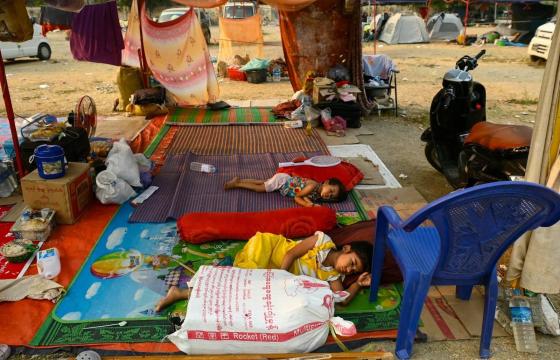Upendranadh Choragudi — The ASEAN+3 Macroeconomic Research Office (AMRO), a regional macroeconomic surveillance organization has forecasted the economic cost of 2019 Novel Corona Virus (now called COVID-19) will see China’s GDP drop by 0.5 per cent and ASEAN by 0.2 per cent during the current year.
Based on its modeling exercise and past evidence of impact of SARS, AMRO predicts that slow down in China could affect ASEAN economies in terms of a dip in their growth rates. The possible channels of slow down could be, through a drop in outbound travel and tourism from China, reduction in intra-regional tourism, decline in China’s imports from the region and the spread of disease in the other countries of the region. All these cumulatively affect in terms of decline in regional growth, according to AMRO report which was released on the 12 February.
The AMRO report acknowledges the low fatality rates (closer to 2 percent) of COVID 19 in comparison to the SARS which has affected the region during 2002-3.
“The epidemic impact on China is projected to be short-lived but significant” due to the slow down in both manufacturing and services sectors in China. The affect may also be experienced in employment and financial stability of China, according to AMRO. Given that large sections of domestic migrant workers had spent Lunar New Year at their native places in central China, the outbreak of corona virus has affected their return to work places there by affecting the production and supply chain in China. Domestic price rise is also visible across provinces of China that are acutely affected by the virus.
What would be the contagion affect across ASEAN? The main channel of impact has been through travel and tourism and their ancillary industries as well as the production and export of intermediate inputs linked to the production of final goods in the highly affected areas in China. Domestic measures within the countries to contain the spread could also affect the production and supply chain. It is to be noted that ASEAN countries have significantly integrated production systems in both agriculture and manufacturing sectors with input supplies as well as movement of labour.
Given that many ASEAN economies depend on tourism from China as a source of revenue, this is one sector going to be hard hit in the short-run affecting the economies. This is particularly identified as acute for Thailand, Cambodia and Viet Nam.
What are the implications of all this for Myanmar? How would the country need to develop contingency plans in light of the forecast? These are the questions that policy makers of Myanmar need to ponder over urgently. While tourism sector is going to be affected directly, trade and commerce across the border is an equally serious concern for Myanmar. Recent media reports point out “border trade almost at stand-still”, affecting fisheries products, rice and corn and horticulture products. Otherwise busy border trade hubs like Muse, appears to be stock-piling goods. This would not only lead to revenue losses, but also affect the production and trade activities within Myanmar. It has been estimated that the value of Sino-Myanmar border trade through the Muse gate is US$1.9 billion between 1 October 2019 to 31 January 2020, according to Myanmar’s Ministry of Commerce. Exporters of perishable goods, particularly fish products, horticulture products like water melons, musk melons, appears to have been hard hit as the volume of exports have dipped significantly during the past few weeks. It is reported by The Global New Light of Myanmar (14 Feb 2020), that “about 50,000 fisheries workers have been rendered jobless due to suspension of border trade of marine products to China through Muse with an estimated loss of export revenue to the tune of US$50 million. All stakeholders in the supply chain including truck drivers and staff of export companies are facing financial constraints.
Similarly imports have also reduced as goods movement has been on embargo, affecting the supply chain of domestic production as well. It is not clear at this stage how the tourism sector has been affected as a whole during the past one month, as several countries including Myanmar have restricted entry of tourists from China. It is to be noted that in December 2019 Chinese tourists accounted for 39% of the total tourists who entered Myanmar through the visa process. Such a large market segment has been affected and a decline in tourism will have negative affect on employment as thousands of people depend on tourism directly or indirectly.
A quick and urgent analysis by the government agencies and independent think-tanks is warranted to assess the potential impact on various sectors of the economy in order to formulate appropriate policy responses. Such an exercise would ensure contingency planning to contain the economic impact on the private sector and especially on export oriented sectors of the country in terms of production, trade and employment.








